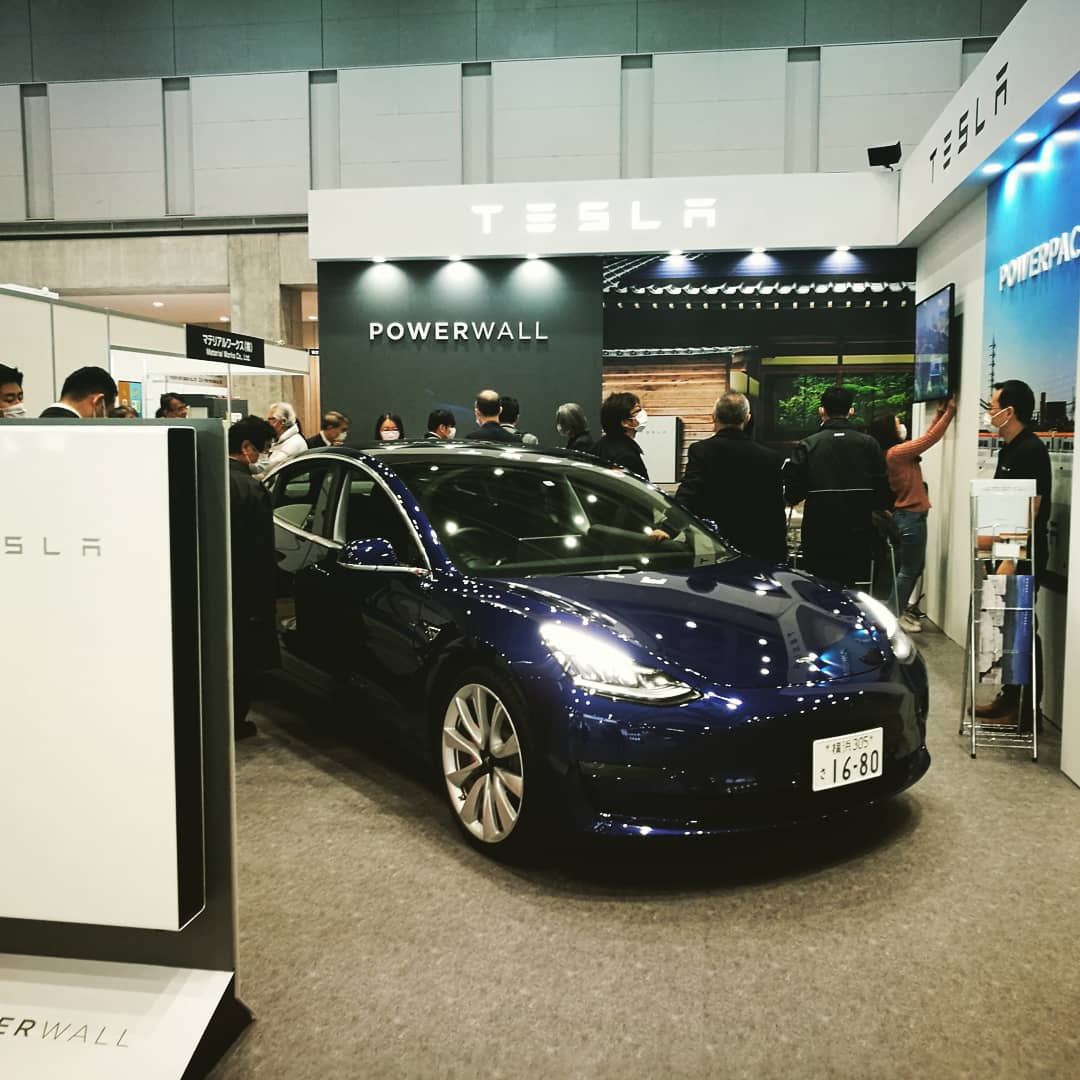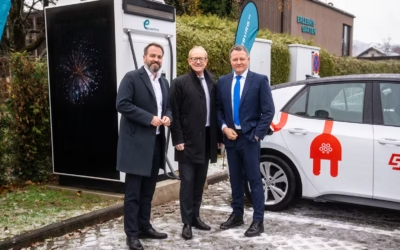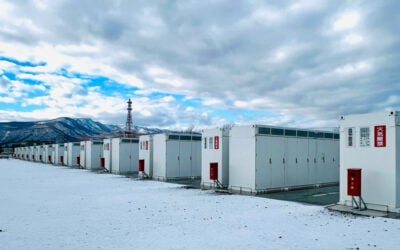
Update 27 February 2020: While the International Smart Grid Expo took place in Tokyo, news was breaking elsewhere that Tesla’s manufacturing partner Panasonic is withdrawing from solar production at the Gigafactory 2 facility in Buffalo in upstate New York. Read PV Tech senior news editor Mark Osborne’s excellent coverage on that site here. Panasonic has issued a press release which clarifies that the pair retain a “strong partnership” for the original Gigafactory, which makes batteries and battery packs at a site in Nevada. Tesla has also recently joined forces with other makers including China’s CATL, a maker of products that include the mass production of lithium iron phosphate (LFP) batteries.
Tesla Inc. today showed off recent activities in the virtual power plant (VPP) space at Tokyo’s Smart Grid Expo, with a view to bringing them at scale into the country’s rapidly changing energy market.
Hiroki Kubota, Tesla general manager for Japan, gave a presentation this morning at the VPP demonstration theatre at the expo, which is co-located with PV Expo, Battery Expo and a number of other related shows at World Smart Energy Week, held in Tokyo’s Big Sight event space.
Try Premium for just $1
- Full premium access for the first month at only $1
- Converts to an annual rate after 30 days unless cancelled
- Cancel anytime during the trial period
Premium Benefits
- Expert industry analysis and interviews
- Digital access to PV Tech Power journal
- Exclusive event discounts
Or get the full Premium subscription right away
Or continue reading this article for free
Beginning with a slick (and loud) promotional video that gave a quick overview of everything from the company’s battery Gigafactory in Nevada to the launch of the Powerwall and Powerpack stationary storage products and finishing with Tesla’s EVs accelerating in their famed ‘Ludicrous Mode’, Kubota’s talk then gave an overview of how the company’s products fit with its mission statement to “accelerate the global transition to sustainable energy”. From its beginnings with a modest rollout of the Roadster in the first decade of the 21st Century, to the Powerwall’s launch in 2015, Tesla Motors became Tesla Inc as the goal of accelerating sustainable transport, became about sustainable energy more generally.
The Powerwall 2 residential system is on sale in Japan and Kubota said both its slim form factor and large capacity by comparison to competitor products (13kWh, with 5kW output, 7kW peak) are suitable for a country where space is at a premium in its densely packed urban environments and customers are increasingly seeking batteries for their homes – and home solar systems – capable of backing up significant loads in the event of outages.
Meanwhile, as reported by Energy-Storage.news, virtual power plants (VPPs), where large numbers of distributed smart energy systems, including batteries, are interconnected, aggregating their capabilities to provide services traditional delivered to the grid by large thermal generation plants, remain at the demonstration stage in Japan, including a bi-directional energy system trial using Blockchain by utility giant Tepco.
While these are a mixture of those launched by private companies and government-backed, the VPP demonstrations are thought to be fairly widespread, but as the country continues to undergo its energy market deregulation process, eyeing a future for solar supported by batteries, VPPs for grid services have not been launched on a widespread commercial or policy-driven basis in Japan.
Ramping up capabilities requires scaling up numbers too
Tesla Japan GM Kubota referred to a few energy storage case studies: one at a public school in Hawaii, where pupils got air-conditioned classrooms for the first time due to the addition of Tesla solar-plus-batteries, another for a railway in Japan which, among other applications, cuts peak energy use at peak times – in this case during Rush Hour – and the large-scale Hornsdale Power Reserve battery system (129MWh) in Australia, which of course has been widely reported on by this and other sites.
From there, moving onto VPPs, Kubota noted that Tesla’s project with Green Mountain Power, a utility in Vermont, US, now has 2,000 Powerwall batteries aggregated to 10MW / 27MWh of power and energy on GMP’s local grid. Even bigger in scale and richer in data provided, was the South Australia Virtual Power Plant.
There, thousands of Powerwalls will be aggregated into the VPP, about half of them privately-owned and deployed and half of them on public housing. While the first phase only saw 100 units installed in a demonstration phase from 2018, the network is aimed to scale up to 50,000 units by 2022. This means a fairly sizeable community of residents are able to use solar-generated clean energy night and day, giving them resilient power supplies from outages and cutting reliance on fossil fuels drastically. The aggregated units also provide grid services including frequency regulation (pictured below). As well as its physical hardware, Tesla’s Hiroki Kubota also talked up the software and artificial intelligence (AI) including predictive analytics and algorithms that enable the company’s kit to predict user patterns, peaks in grid demand and so on.
While the company’s stand was undoubtedly popular at the show, constantly crowded with visitors, the Silicon Valley manufacturer will face competition from many angles as it looks to scale what could be a smart solution to Japan’s renewable energy conundrum – that of wanting to deploy renewables including solar but rapidly running out of land for large-scale solar farms.
In a conversation yesterday with UK-headquartered technology company Moixa, which has provided GridShare, a smart software solution to Japanese manufacturer Itochu’s battery storage systems, CTO Chris Wright revealed that GridShare is in action in 164MWh of energy storage in Japan already. Wright said that the software is essentially VPP-ready. There is also AutoGrid, another California tech provider, which is already providing an aggregation platform to Japanese company ENERES with a view to expanding its future capabilities. AutoGrid’s general manager for New Energy, Rahu Kar, recently told Energy-Storage.news that viable VPP solutions in Japan – and elsewhere – will require enormous numbers of distributed assets connected to them. Meanwhile the likes of Engie-backed aggregator and distributed energy platform provider Kiwi Power are also eyeing an entry into the Japanese market.





